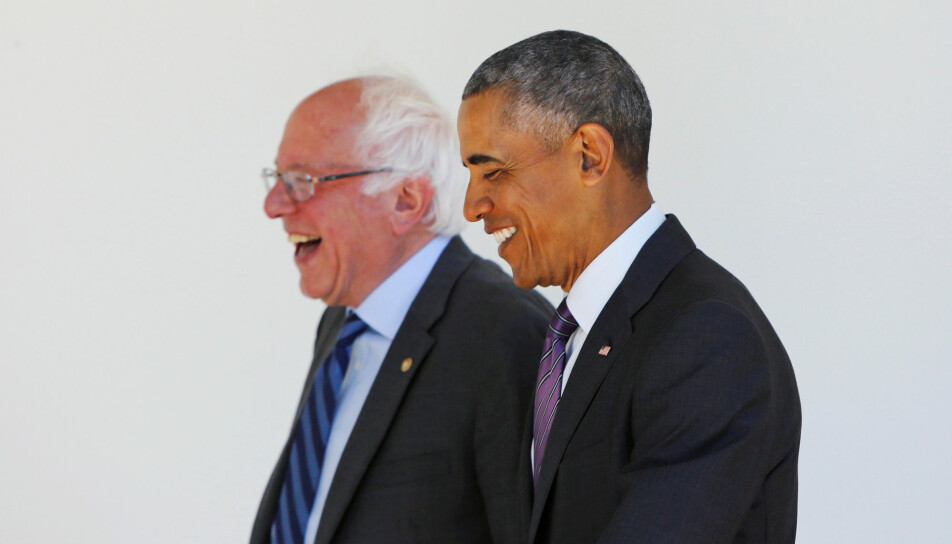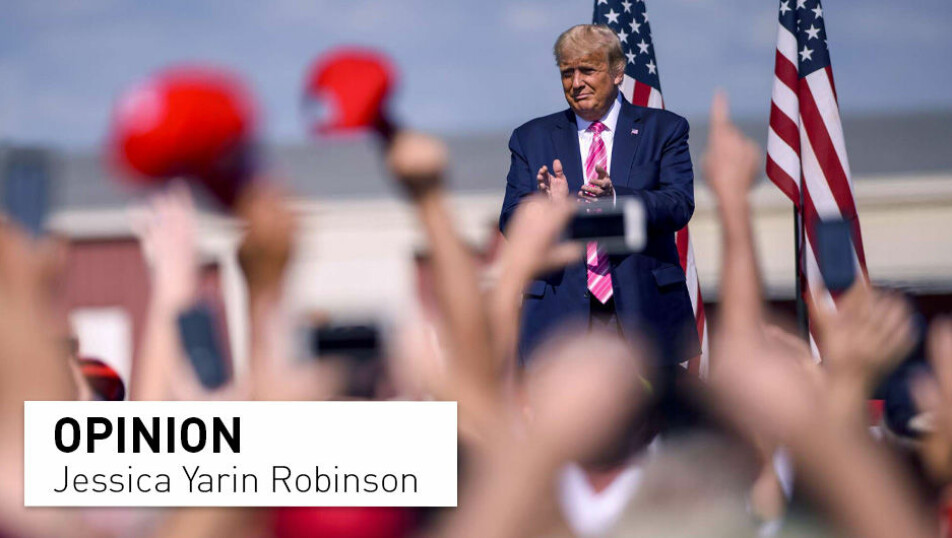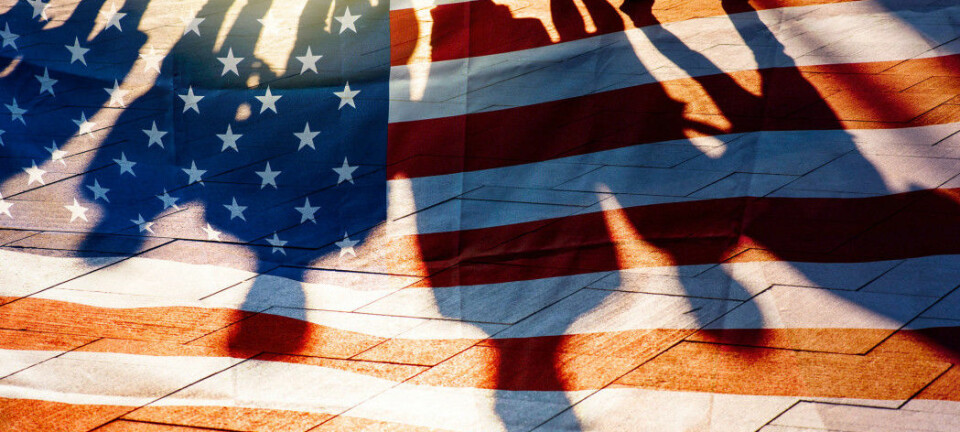
American politicians use the Nordic region as both a role model and a scare tactic
Different groups use the Nordic countries for different rhetorical purposes, one political scientist observes.
In the years under President Donald Trump, the Nordic countries have played a more visible role in American politics.
The Nordics are used as a role model — and as a scare tactic — because not everyone agrees that Norway and the Nordic countries allow people to fulfil their dreams.
Obama, Sanders and Trump
“The USA is no longer the country of the future,” states sociology professor Haldor Byrkjeflot from the University of Oslo (UiO).
This harsh reality has caused many Americans to search for alternatives. The search has led to the emergence of the Nordic region as one of the few shining lights in the world.
Former US presidential hopeful and Vermont Senator Bernie Sanders, who calls himself a "democratic socialist", has referred to Nordic solutions many, many times, citing virtues such as free higher education, parental leave and a health care system for all.
Barack Obama is also very fond of the Nordic countries. He has proposed that Americans consider programmes from the Nordic region as an alternative to a collapsed American dream.
Even Donald Trump has his use for the Nordics.
But not in the same way as Sanders and Obama. Among other things, Trump has used Sweden as an example of how wrong things can go with a country’s handling of the coronavirus. "Sweden is having a terrible time. Sweden is haunted,” he said in June.
Since then, things have gone even worse for Trump and the United States.
The Nordic region as a dream and a nightmare
Trump and his administration have used the Nordic region as a dream or a nightmare, depending on the situation and their need for different arguments, Byrkjeflot said during a meeting on the Nordic region's role in American politics, organized by the major research initiative UiO: Nordic.
Byrkjeflot says that Trump and his advisers probably probably perceived it as a threat when Bernie Sanders initiated a discussion in the United States on the successful Nordic model.
For Trump, this could have been dangerous for his re-election campaign, if it had turned out that the "socialist" Sanders was the Democrats' candidate. Trump and his supporters consequently invoked the very special American fear of socialism that grew out of the Cold War with the Soviet Union, and which is still a concern for many adult Americans.
In 2018, the Trump administration came out with its own anti-socialist report examining the disadvantages associated with policies similar to those in Norway and the Nordic countries. A chapter entitled "Socialism costs" says, among other things, that inhabitants of the USA have a 15 per cent higher standard of living compared with the inhabitants of the Nordic countries. This last statement has been soundly refuted by researchers at Statistics Norway (SSB).

Many now find socialism attractive
It appears that the strategy of promoting the Nordic region as scary hasn’t succeeded very well, says Byrkjeflot.
“That Bernie Sanders calls us socialists, not social democrats, is perhaps not unproblematic. But socialism is actually becoming increasingly popular among young people in the United States,” he said during the UiO:Nordic meeting.
Surveys among people under the age of 30 in the United States show that they actually perceive socialism as being as attractive as capitalism, according to a Gallup Poll survey conducted in late 2019.
The now 31-year-old "democratic socialist" Alexandria Ocasio-Cortez entered Congress in 2019 with a large majority from New York and as the youngest female representative in the House of Representatives ever. Over a short time, she has established herself as one of the most popular politicians in the United States.
The Nordic region as a progressive ideal
Hilmar Mjelde is a political scientist who studies American politics at the University of Bergen. He believes that left-leaning voters in United States now see the Nordic region as a progressive ideal.
Conservatives, on the other hand, have different ways of using the Nordic region as a scare tactic.
“Different groups use the Nordic countries for different rhetorical purposes,” Mjelde said. “But this is very much an elite discourse. The average American has no relationship whatsoever to the Nordic countries. They aren’t even able to find the Nordic countries on a map.”
Mjelde is also concerned that Americans don’t seem to understand social classes.
When Bernie Sanders didn’t succeed in his bid to become president, it was partly because a group like African Americans— who are the most socially and economically disadvantaged group in all of the United States —think of themselves more as an ethnic group, rather than as a social class.
Sceptical of centralize government
Mjelde also talked about Americans' baked-in scepticism of centralized government.
“The American political system is designed to spread power. This is a mainstay of the system. Consequently, it’s in the very backbone of Americans to be sceptical of anything that has to do with the state,” he said.
In that context, he said, it’s a huge paradox that Americans now seem to have such extreme trust in "the great leader".
"First there was a personality cult around Obama, and now there’s one surrounding Trump."
The United States was a society of equality
Kalle Moene is a social economist at the University of Oslo and is particularly concerned with the United States and the Nordic countries from the perspective of inequality.
He points out that 150 to 200 years ago, the United States was one of the most egalitarian countries in the world. At the same time, Europe was very class-based.
Class never affected how policies were organized in the United States. The United States also never developed a large Social Democratic party. As a result, there was never any pressure to establish the same kinds of welfare schemes that evolved in European countries.
The United States has now become one of the countries with the largest economic disparities in the Western world, according to the OECD.
Developed welfare schemes similar to Europe's
But developments in the United States could have gone differently.
“After the mid-1930s, with the exception of the war, the United States had something that looked a little like what had been developed in the Nordic region,” Moene said. “They had a fairly high percentage of workers who belonged to unions, between 30 and 40 per cent in many sectors. The wage differences were smaller than they had been in a long time,” he said.
At the same time, he said, the US expanded its welfare state schemes in a way that was similar to Europe.
But that all ground to a halt in the 1960s and 1970s.
Nordic model developed over time, not adopted whole cloth
Moene says that what some call the Nordic Model is not something that has been deliberately adopted.
Instead, he says, it is something that has evolved.
“There have been gradual reforms, and trial and error over long periods,” Moene said, adding that many Norwegian union leaders were once very inspired by unions in the United States. They actually travelled to the US to study them.
Could the United States become socialist?
Moene wonders whether the way the Nordic region is organized is perhaps most appropriate for small economies that are open and that compete on the world market.
“The United States is a large and mostly closed economy,” he said.
Perhaps the Nordic model was established over time because of the need to demonstrate competitiveness externally to the world while at the same time striving to promote socialist equality internally. That might have been the pressure that drove Nordic reforms, he said.
If that’s true, then it won’t be easy for other countries, such as the USA, to copy what has been achieved in the Nordic countries.
Moene believes it’s naive to think that one model of society can be exported from one country to another.
But countries can still learn from each other.
“An important lesson for the United States may be that small wage differences and collective insurance schemes can work well with a high degree of market orientation,” he said.
Translated by: Nancy Bazilchuk
———


































